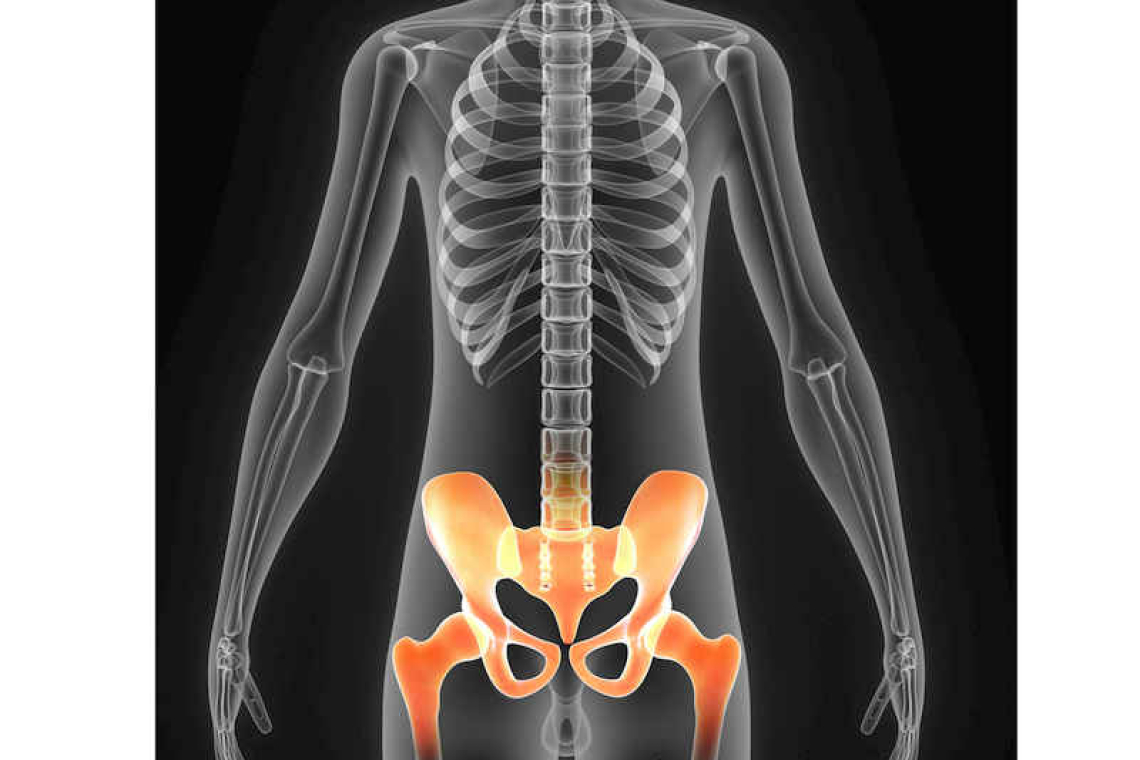By Dr. Colin Michie FRCPCH University of Central Lancashire
Do you have pain in your hip at night, or early in the morning? Is perhaps climbing out of a car or standing on one leg a challenge? Difficulty putting on shoes or socks? These can be early signs of hip problems.
Our species is blessed with upright gait that gives us the speed of sprinters, the agility of gymnasts and the capabilities of mountain climbers like Desiree Winkel. Our body weight is transmitted through sockets in the pelvis to the spherical heads of the femurs. These ball and socket joints are lined with cartilage and synovial membranes that are vacuum sealed and lubricated with fluid to minimise friction. Each joint is held in a tight capsule of fibrous, elastic tissues and ligaments; it is cushioned by two jelly-like sacs or bursae.
Keeping hips healthy and carnival-primed is dependent on the strength and compliance of several muscle groups around the hip joint. The gluteus muscle group in the buttocks provide core stability to the trunk and move the femurs; the large thigh muscles and those regulating knee mobility are all involved. We vary considerably in our body designs, but considering hip-health is core to many activities.
Lifestyles involving overmuch sitting have resulted in many losing core muscle strength. Some do not take the physical activities recommended to keep joints healthy. Coaching materials on the internet advise on care for hips with stretches and exercise. Workouts in water have a particular and great advantage of using buoyancy to effectively reduce body weight and strains on the hip joints. The waters of St. Maarten are world renowned: Is it time to take a regular plunge?
Hips are exposed to traumas, use and overuse during our early years. Their cartilages may have a repair “clock” that begins to slow down with age. Although hip-lining cartilages accommodate and regenerate, they become thinner, inflamed and damage the bones around them in middle age. This causes pain. This is the hyaena of osteoarthritis, which varies, flaring occasionally, perhaps even with the weather. It can affect sleep, mood, wellbeing, our very personalities. Our brains need a functioning, well-oiled skeleton! Shakira and Wycliffe Jean composed “My hips don’t lie” – music can get you dancing, but hips also tell truths about the insults of time.
Osteoarthritis is the most common type of arthritis, particularly in those over 50. It affects an estimated seven percent of the global population. There are no effective treatments to slow or halt early osteoarthritis. Improving hip function often requires pain reduction, because pain reduces mobility and muscle strength which adds further to frailty and discomfort. Those with hip osteoarthritis may find other joints are involved, in particular the knees and fingers. Bony changes from osteoarthritis can sometimes be seen on an x-ray.
Self-management of hip problems is how most cope. Pain control may be easy words to write, but these processes are complex. Massage, stretches of different types, or cold therapy can benefit muscles. Herbal teas help relax us. Some can improve their hip functions by losing weight. Controlling continuous hip pain that may resemble the rubbing of coarse sandpaper on bone requires a reduction in inflammation. Treatments with nonsteroidal anti-inflammatory medications as well as pain killers such as paracetamol or Tylenol are first-line prescriptions. Some of these therapies may have side effects such as stomach irritation. Some agents may be used as a topical gel – finding the best combination may take time.
Opiates such as codeine or morphine deliver more powerful pain relief over time, at the risk of causing an addictive habit. Steroid injections can give short-term relief, but ideally should not be used repeatedly. Some treatments have been found unhelpful when carefully tested. These include supplements with vitamins, antioxidants, collagen, wrist bracelets or injections of hyaluronic acid. Although there are insufficient powerful trials of medical cannabis in osteoarthritis, early results suggest this may offer a method to reduce opiate use for some sufferers.
Primitive surgical approaches to reduce pain by fusing the hip joint gave way to total hip replacements in the 1960s. Life-changing results with hip replacements in elderly patients helped improve devices and procedures. Methods such as hip resurfacing can now be used successfully in younger patients who place greater demands on their joints. Implant materials have included aluminium, ceramics and titanium. There have been improved surgical approaches, differing anaesthetics and computer aids to direct the exact positioning of implants. These jointly deliver cost-effective and replacement implants that can tackle the ravages of osteoarthritis. The use of a cup fixed into the pelvis, articulating with a prosthesis placed in the femur has proved to be an engineering marvel that will put moves back into many a dance.
Useful resources:
https://www.cdc.gov/arthritis/basics/osteoarthritis.htm
https://www.who.int/news-room/fact-sheets/detail/physical-activity
https://www.nhs.uk/conditions/hip-pain/
Dr. Colin Michie is currently the Associate Dean for Research and Knowledge Exchange at the School of Medicine in the University of Central Lancashire. He specializes in paediatrics, nutrition, and immunology. Michie has worked in the UK, southern Africa and Ghaza as a paediatrician and educator and was the associate Academic Dean for the American University of the Caribbean Medical School in Sint Maarten a few years ago.







